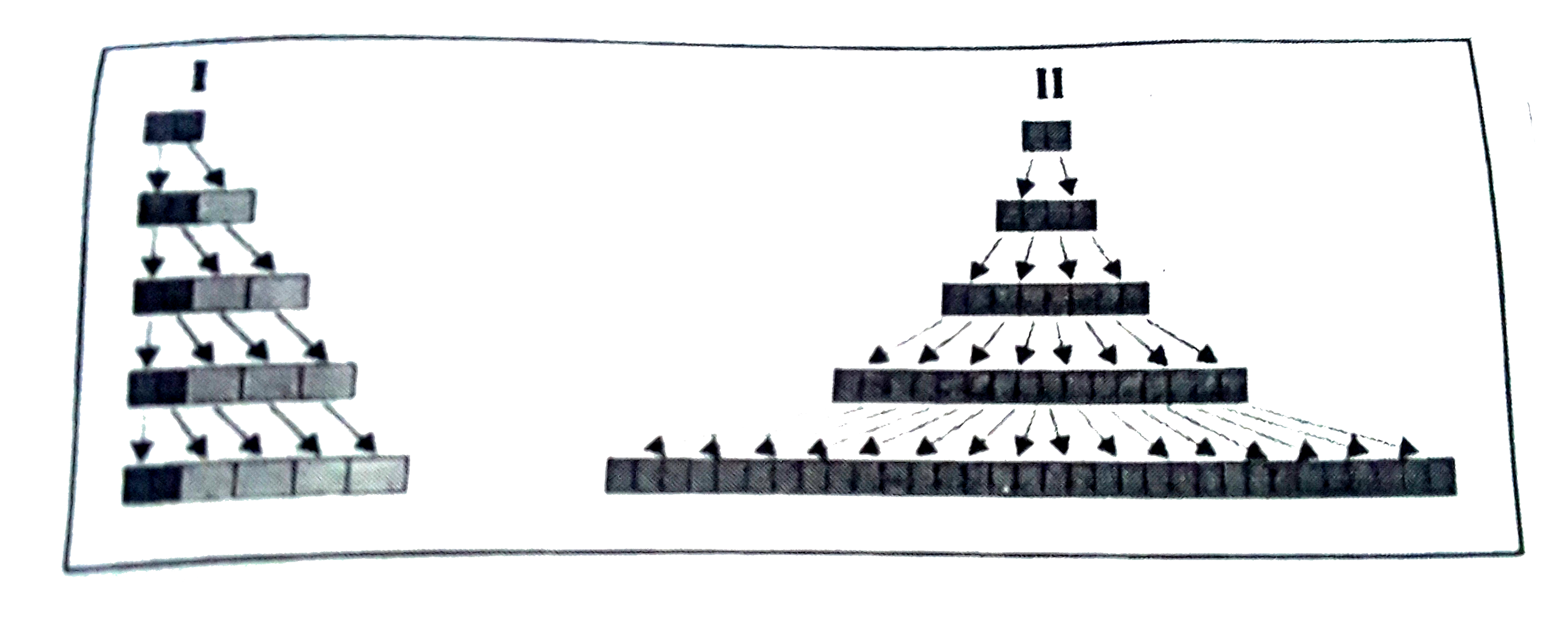How are teflon and nylon-6 synthesised ? Identify the type of polymerization on the basis of chain-growth and step-growth polymerization.
Teflon (chain-growth): nylon-6 (step-growth)
Topper's Solved these Questions
- BOOK - ICSECHAPTER - POLYMERS EXERCISE - EXERCISE (PART-II (DESCRIPTIVE QUESTIONS )) ( LONG ANSWER QUESTIONS )37videos
POLYMERS
- BOOK - ICSECHAPTER - POLYMERS EXERCISE - ISC EXAMINATION QUESTIONS10videos
POLYMERS
- BOOK - ICSECHAPTER - POLYMERS EXERCISE - EXERCISE (PART-II (DESCRIPTIVE QUESTIONS )) ( SHORT ANSWER QUESTIONS )1videos
POLYMERS
- BOOK - ICSECHAPTER - P-BLOCK ELEMENTSEXERCISE - SOURCE BASED QUESTIONS10videos
P-BLOCK ELEMENTS
- BOOK - ICSECHAPTER - PROLEMS BASED ON CHEMICAL STRUCTURES AND REACTIONS EXERCISE - QUESTIONS185videos
PROLEMS BASED ON CHEMICAL STRUCTURES AND REACTIONS
Similar Questions
Knowledge Check
- Question 1 - Select One
Formation of nylons and polyesters are called step growth polymerisation because
Athe polymers are formed by adding a monomer step by stepBthe polymers are formed by condensation and monomers are joined by loss of simple molecules like waterCthe monomers used for condensation are unsaturated moleculesDthe polymers are formed by addition of a large number of free readicals formed by monomers . - Question 2 - Select One
Monomers are simple molecules, which combine with each other to form polymers. Each polymer has a repeating structural unit. Polymers formed from the same type of monomers are called homopolymers and if two or more different repeating units (monomers) make up the polymer, it is known as a copolymer. Both homopolymers and copolymers may be formed either by addition or condensation reactions. Alkenes adn dienes polymerize by addition (chain growth) mechanism involving carbocations, carbanions or free radical intermediates. Dienes (chloroprene, isoprene, etc) polymerize by 1, 4-addition mechanism to give cis-or trans-polymers. Natural rubber is however, cis-polyisoprene. Natural rubber is quite soft and flexible but these properties can be improved by a process called vulcanization. In contrast, bifunctional monomer molecules undergo condensation or step-growth polymerization. Polymers which can be heated and reshaped as many times as desired are called thermoplastics (polythene, polystyree, PVC teflon, etc). While those which can be heated only once to give a particular shape are called thermosetting polymers (Bakelite, Melmac etc)
Vinyl chloride is the repeating unit inAPolystyreneBNeopreneCPVCDpolyethene - Question 3 - Select One
Monomers are simple molecules, which combine with each other to form polymers. Each polymer has a repeating structural unit. Polymers formed from the same type of monomers are called homopolymers and if two or more different repeating units (monomers) make up the polymer, it is known as a copolymer. Both homopolymers and copolymers may be formed either by addition or condensation reactions. Alkenes adn dienes polymerize by addition (chain growth) mechanism involving carbocations, carbanions or free radical intermediates. Dienes (chloroprene, isoprene, etc) polymerize by 1, 4-addition mechanism to give cis-or trans-polymers. Natural rubber is however, cis-polyisoprene. Natural rubber is quite soft and flexible but these properties can be improved by a process called vulcanization. In contrast, bifunctional monomer molecules undergo condensation or step-growth polymerization. Polymers which can be heated and reshaped as many times as desired are called thermoplastics (polythene, polystyree, PVC teflon, etc). While those which can be heated only once to give a particular shape are called thermosetting polymers (Bakelite, Melmac etc)
Which of the following is not a natural polymer?ADNABstarchCPalmitateDNylon-6, 6
The intermediate never formed during chain growth polymerization is
View SolutionIdentify the following diagrammatic representation of types of growth and their mathematical expression.
 View Solution
View SolutionIn the polymerase chain reaction, the optimum temperature for the polymerization step is
View SolutionFill in the blanks by choosing the appropriate word/words from those given in the brackets : (Natural, synthetic, step-growth, chain-growth, natural rubber, synthetic rubber, melamine, thermo, thermosetting, addition, condensation, hydrogen bonds, van der Waals', 373-573, 543, 100, 10, benzoyl peroxide, acetyl peroxide, amide, butadiene, natrium, dimethyl terephthalate)
Depending upon the growth of chain, two types of polymerization are .......... and ............View SolutionMonomers are simple molecules, which combine with each other to form polymers. Each polymer has a repeating structural unit. Polymers formed from the same type of monomers are called homopolymers and if two or more different repeating units (monomers) make up the polymer, it is known as a copolymer. Both homopolymers and copolymers may be formed either by addition or condensation reactions. Alkenes adn dienes polymerize by addition (chain growth) mechanism involving carbocations, carbanions or free radical intermediates. Dienes (chloroprene, isoprene, etc) polymerize by 1, 4-addition mechanism to give cis-or trans-polymers. Natural rubber is however, cis-polyisoprene. Natural rubber is quite soft and flexible but these properties can be improved by a process called vulcanization. In contrast, bifunctional monomer molecules undergo condensation or step-growth polymerization. Polymers which can be heated and reshaped as many times as desired are called thermoplastics (polythene, polystyree, PVC teflon, etc). While those which can be heated only once to give a particular shape are called thermosetting polymers (Bakelite, Melmac etc)
Which of the following are examples of homopolymers?View Solution

